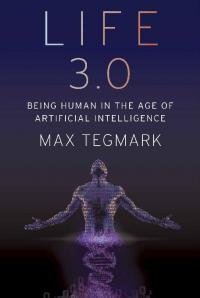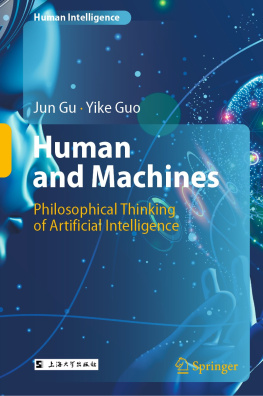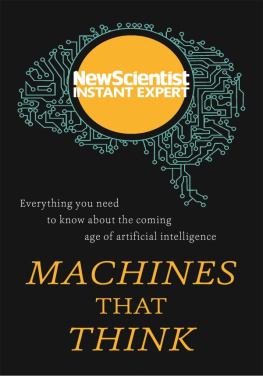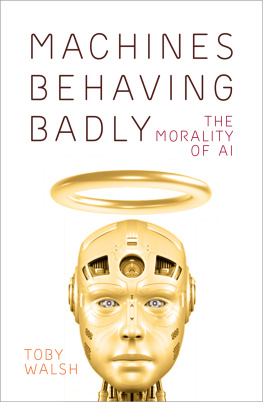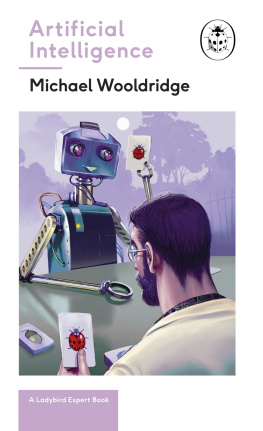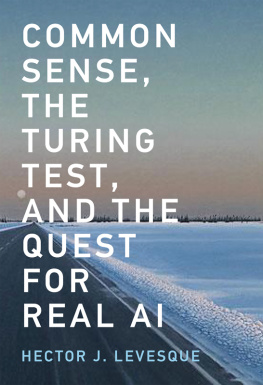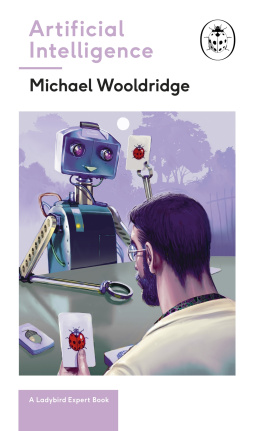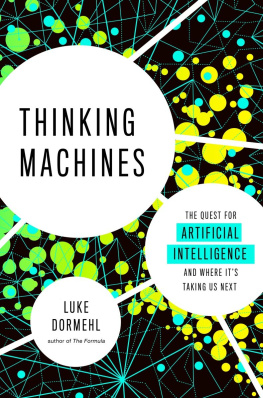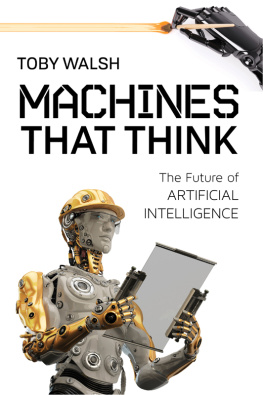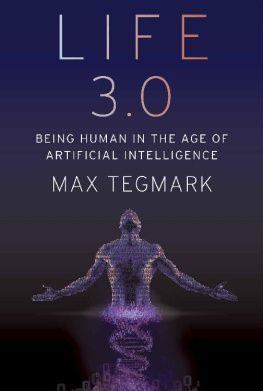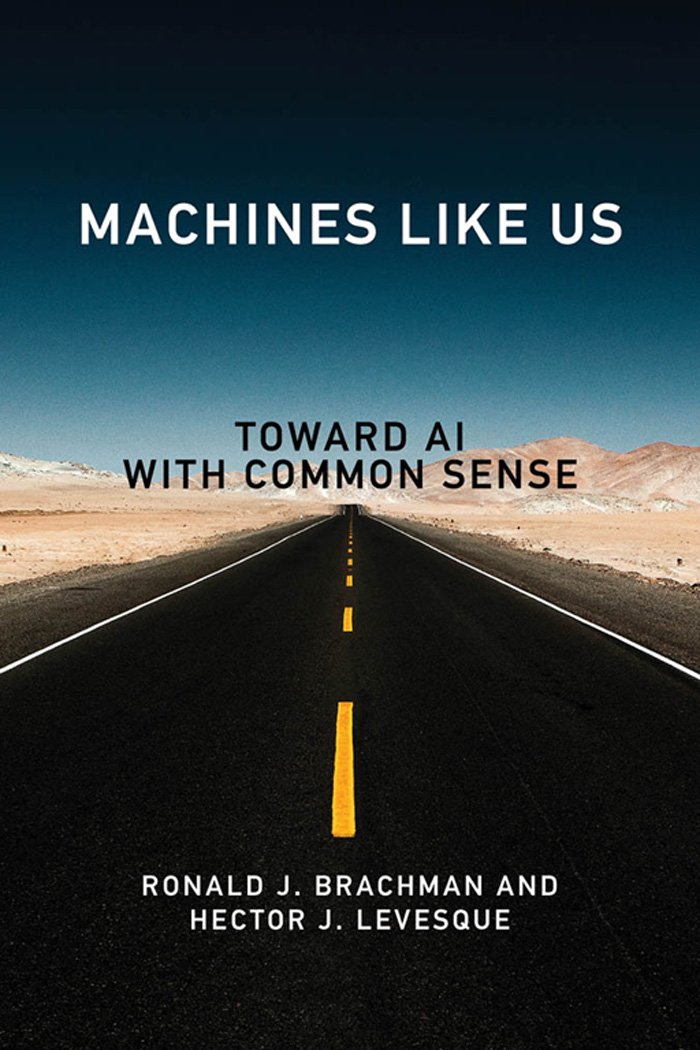
Machines like Us
Machines like Us
Toward AI with Common Sense
Ronald J. Brachman and Hector J. Levesque
The MIT Press
Cambridge, Massachusetts
London, England
2022 Massachusetts Institute of Technology
All rights reserved. No part of this book may be reproduced in any form by any electronic or mechanical means (including photocopying, recording, or information storage and retrieval) without permission in writing from the publisher.
The MIT Press would like to thank the anonymous peer reviewers who provided comments on drafts of this book. The generous work of academic experts is essential for establishing the authority and quality of our publications. We acknowledge with gratitude the contributions of these otherwise uncredited readers.
This book was set in ITC Stone Serif Std and ITC Stone Sans Std by New Best-set Typesetters Ltd.
Library of Congress Cataloging-in-Publication Data is available.
Names: Brachman, Ronald J., 1949- author. | Levesque, Hector J., 1951-author.
Title: Machines like us : toward AI with common sense / Ronald J. Brachman and Hector J. Levesque.
Description: Cambridge, Massachusetts : The MIT Press, [2022] | Includes bibliographical references and index.
Identifiers: LCCN 2021031316 | ISBN 9780262046794 (hardcover)
Subjects: LCSH: Artificial intelligence. | Knowledge representation (Information theory)
Classification: LCC Q335 .B695 2022 | DDC 006.3dc23
LC record available at https://lccn.loc.gov/2021031316
10987654321
d_r0
For Mom and Dad, for lifetimes of love.
RJB
For my dear brothers John, Ray, and the late Peter and Paul.
HJL
Contents
Preview
Imagine, if you will, a future where self-driving cars are much better than they are now. They reliably avoid obstacles, obey traffic lights and signs, and even respond to turn signals from other drivers. Autonomous carts are universally deployed at golf courses, movie lots, and residential communities, and self-driving vans fully service urban commuters in many cities. They have not caused an injury accident in years. In fact, these imagined cars are so safe and dependable that they dont even need human drivers as backup.
The technology has reached the first wave of consumers, and many of your neighbors now have self-driving cars in their driveways. Youve joined them. Your new car is amazing, better than you at driving in adverse conditions like blizzards, changing lanes in heavy traffic, and navigating through intersections crowded with pedestrians, dogs, strollers, bicycles, and other vehicles. You just set the destination, and off it goes. Remarkably, many stores now provide curbside spots for cars like yours to have their trunks loaded up and sent on their way homeno human needed in the car at all.
Now picture this:
Its just before noon on Monday, and you send your car on a shopping run to Joness Grocery Store. Today is the national Independence Day holiday, and Joness is having a sale on its great steaks, which youre planning to barbecue this afternoon. You expect the trip to be quick because so many people are at the beach for the holiday and the store is not far away.
The car approaches the intersection of Bradford and Victoria. The traffic light is red so the car glides smoothly to a stop and waits for the light to turn green. Three minutes go by, and the light stays red. Five minutes go by, and the light is still red. The cars cameras detect some activity on the far side of the intersection, but no action is suggested. Your cars computersexcellent with obstacle avoidance and lane followingare not equipped to understand that drivers on the other side are getting out of their cars, talking to each other,and pointing. Your cars new external audio sensors, trained to detect honking and sirens, cannot make any sense of a somewhat distant musical sound coming from the right.
The cars navigation system has no rerouting suggestions; there is no traffic to speak of, and no known construction or accidents along the route. So the car sits there, waiting patiently for the light to change. Ten minutes go by, and then fifteen.
Meanwhile, at home, you begin to wonder why the car hasnt reported picking up the groceries. You know if it had a mechanical problem it would text you an alert. You check your app and see the car waiting at the intersection, and note that it hasnt moved in a quarter hour. Yet nothing is amiss. Your remote monitor shows that the car is just obeying the law, waiting for the light to turn green. Why isnt it doing something? You throw your hands up, bemoaning the fact that while your car drives like a pro, it occasionally makes these inexplicable blunderslike waiting forever at a traffic light while your guests are about to arrive.
Now imagine an alternate scenario. Its you driving this time. Same intersection, same stuck light, same five minutes gone by:
You ask yourself, What on earth is going on? Should I wait a bit longer just in case? Drive through the red light? Make a right turn to get around the intersection? Get to the store some other way? Forget about Joness and go to another store? Give up on groceries altogether and head back home? (You can always order takeout.) You turn off the radio and ponder for a few seconds. The drivers on the other side of the intersection catch your eye. You look where they seem to be pointing. You see a bunch of flags in the distance and what looks like an open convertible with some people sitting atop the back seat. You hear some brassy-sounding music coming from that direction.
After a moment, you give up on Joness, turn the car around, and head off to a different store.
Think about what was going through your head as you figured out what to do. Its not as if you remembered some specific rule that solved the problem for you. Certainly nothing you learned in driving school told you what action to take. Theres really no single driving move that is the right thing to do in cases like this. Maybe youve experienced broken traffic lights before and followed other drivers right through the intersection (with great caution, of course). But in this particular case, you figured that the light was staying red because a parade was coming on the cross street. Oh yeah, you remembered, its Independence Day! You could have turned around and tried another route, but this was either going to take too much time or run into the parade at a different intersection. So you decided to go elsewhere. You could have gone to Smiths Grocery Store, which is closer to where you are, but the meat and produce there are nowhere as good. So you decided to head to Roberts instead.
You dont have to be some sort of driving expert, like a cabbie with thousands of hours on the road, to come up with driving behavior like this. Maybe its not a learned routine you can just follow mindlessly while concentrating on something else like brushing your teeth or walking the dog. But its not rocket science either. No pencil and paper required. You have to be able to take into account some things about your current situation, but beyond that, its really just the ordinary common sense that any intelligent person would be expected to have.
An average adult will know many relevant, mundane things: you dont just wait forever at a traffic light; people talking and gesticulating likely indicates something interesting going on; flags and brassy band music likely presage a parade. And theyll put it all together quickly and make a fast, reasonable guess at what to do next: take the second-best choice if the first one no longer looks as promising. Its just common sense. And your supposedly intelligent car, while an excellent drivermaybe even an outstanding oneclearly doesnt have it.
Next page

